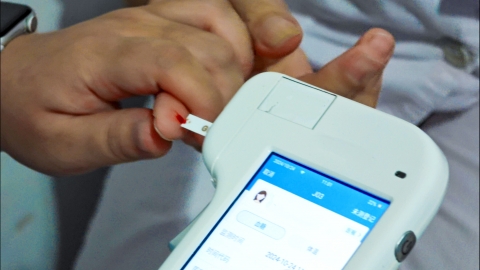What should patients with high blood sugar eat?
High blood sugar patients can generally consume foods such as lentils, flaxseeds, avocados, mushrooms, and chickpeas. Additionally, medications like Voglibose Tablets, Nateglinide Tablets, Liraglutide Injection, Gliclazide Tablets, and Metformin Hydrochloride Sustained-Release Tablets may be used. If any concerns exist, it is recommended to consult a doctor in advance. Detailed explanations are as follows:

I. Foods
1. Lentils: Contain resistant starch and dietary fiber that delay glucose absorption, improving postprandial blood glucose curves. It is recommended to stew them or make them into mixed grain rice to increase satiety.
2. Flaxseeds: Rich in lignans antioxidants and Omega-3 fatty acids, which help regulate insulin sensitivity. Grinding them before adding to porridge or bread can enhance absorption.
3. Avocados: High in monounsaturated fatty acids, which lower the overall glycemic index (GI) of meals. Their mucilage content delays gastric emptying. It is recommended to eat them sliced or make salads.
4. Mushrooms: Low in calories and contain beta-glucans that activate immune cells to promote energy metabolism. Stir-frying or making soups helps preserve the active polysaccharide components.
5. Chickpeas: Combine plant protein with fiber to inhibit alpha-amylase activity, reducing carbohydrate breakdown. They can be made into hummus or baked goods.
II. Medications
1. Voglibose Tablets: Alpha-glucosidase inhibitor that delays carbohydrate breakdown in the intestines, lowering postprandial blood glucose peaks. They should be chewed with meals.
2. Nateglinide Tablets: Short-acting insulin secretagogue that mimics postprandial insulin secretion patterns, rapidly controlling blood glucose fluctuations. Suitable for patients primarily experiencing postprandial hyperglycemia.
3. Liraglutide Injection: GLP-1 receptor agonist that suppresses appetite centrally, reducing calorie intake and improving pancreatic beta-cell function.
4. Gliclazide Tablets: Second-generation sulfonylurea drug that selectively acts on pancreatic beta cells, reducing the risk of hypoglycemia. Suitable for patients with mild to moderate insulin deficiency.
5. Metformin Hydrochloride Sustained-Release Tablets: Reduces gastrointestinal irritation while continuously suppressing hepatic glucose production and enhancing glucose utilization in muscles. Suitable for long-term blood glucose management.
To better manage blood sugar levels, it is recommended to follow the principle of balanced diets, eat meals at regular times and in appropriate quantities, and combine this with moderate exercise. Regular blood glucose monitoring, along with collaboration with a doctor or dietitian to develop a personalized dietary plan, is also advised.










